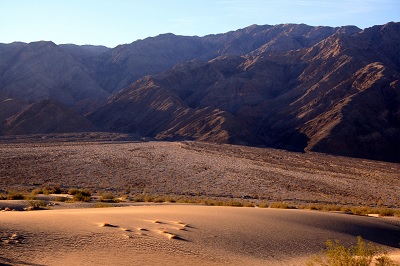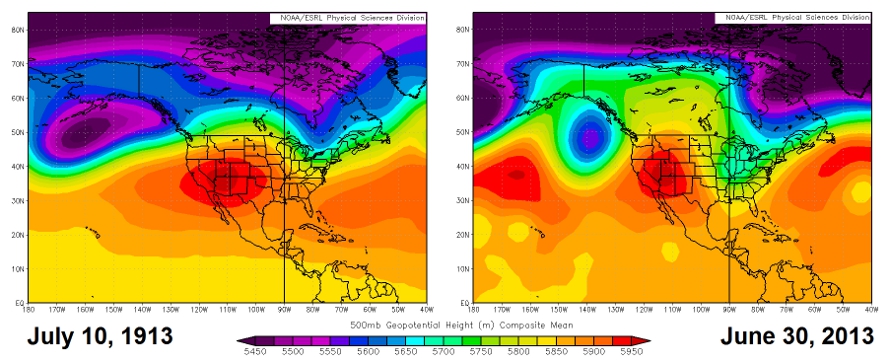On Wednesday, Death Valley, CA, should be a little livelier than usual as crowds are expected to come and celebrate the 100-year anniversary of the world’s hottest recorded temperature. On July 10th, 1913, the mercury skyrocketed to 134°F at the appropriately named Furnace Creek.
Note: Since this post was originally published, this Death Valley record has come into question, but as of 2021, it retains its record status according to the National Centers for Environmental Information.
Interestingly, that number was recognized as the world record for less than 10 years after it was set. In September 1922, a weather station in northern Libya apparently reached an even higher 136°F. That value stood until late last year, when a team of meteorologists from around the world concluded that, among other reasons, an inexperienced observer reading the thermometer incorrectly meant the long-held Libyan record was invalid. That officially handed the world record back to Death Valley.

Just in time for the 100 year anniversary, last week Death Valley saw some of its hottest days of the past century. On June 30th, the mercury climbed to 129 degrees, which tied the U.S. record for the highest June temperature (if you’re curious, that record was first set in 1902 in the now-abandoned town of Volcano in south central California).
Comparing the large-scale patterns from July 10, 1913, and June 30, 2013, we can see a lot of similarities and a few differences. In 1913 (left map below), a wide ridge, or upper-level high pressure system, set up across much of the U.S., with the most severe heat confined to the southwest. However, even North Carolina saw some above-normal temperatures during that time, as Charlotte hit 92 degrees and Raleigh reached 91 on July 10th.
During the western heat wave last month (right map below), a trough in the jet stream dug down across much of the eastern U.S., which helped keep us relatively cool, with plenty of rain. However, the ridge out west was much “taller”, spanning farther north than in 1913, and it was nearly identical in strength.

So why is Death Valley such a hot place during the summer? For one, a lack of plants and nearby bodies of water means there is very little moisture in the air — last week, dew points were routinely in the low 30s with air temperatures in the 120s. Less moisture means less evaporation to cool the air. Terrain also plays an important role. As the name implies, Death Valley sits between two mountain ranges, so it acts like a sink for air that descends from the mountains and warms up. The extremely low elevations — Furnace Creek is 190 feet below sea level — also help add a few degrees to already hot afternoons because temperatures generally increase as you descend in the lowest layer of the atmosphere.
By contrast, even when we see hot days in North Carolina, it rarely gets much above 100 or 105 degrees because we don’t have such extreme terrain and there is so much moisture in the air — during last summer’s heat wave, our dew points were generally in the 60s and 70s. Of course, as the saying goes around these parts, “it’s not the heat, but the humidity”.